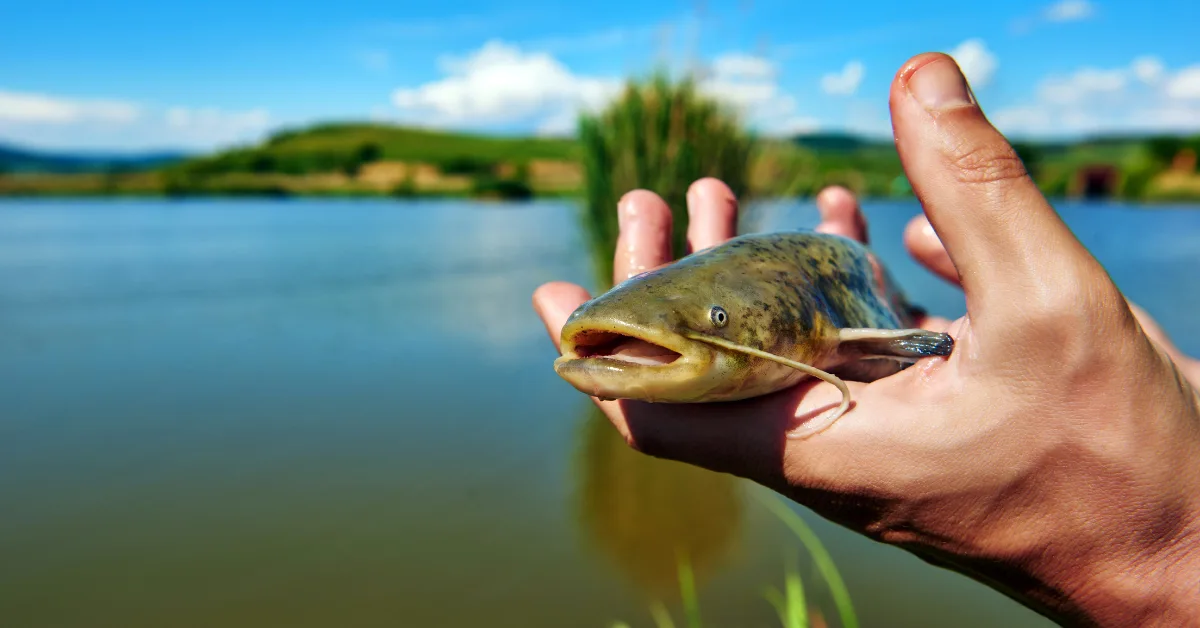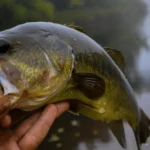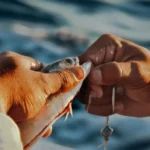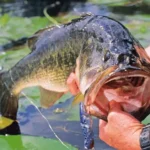Do Catfish Have Teeth? Yes, catfish do have teeth. Both young and adult catfish have teeth and tooth structures used for catching and consuming food. The teeth take different forms through various catfish life stages, evolving from needle-like teeth in fry to tougher tooth pads lining the jaws of adult catfish.
That whiskered face and big frown disguise one question – what’s really hiding inside a catfish’s mouth? Do they sport toothy jaws for tearing into prey?
We dive deep into catfish and their dental structures, how teeth transform through life stages, and the feeding strategies utilized because of tooth function. Even the threats posed by mega catfish bites get covered!

Tiny Needle Teeth Emerge First as Deadly Fry Weapons
Right from hatching, catfish fry begins exhibiting early catfish tooth formations. These appear as double or triple rows of slender needle-like teeth running in bands along the upper and lower jawlines.
"Newly hatched catfish have a mouth full of sharp little teeth to help them feed." - NJ Division of Fish and Wildlife
Larval catfish teeth resemble fine hairs but act like conventional piercing tooth forms. Their purpose focuses heavily on grasping and securing initial prey for fry, including:
- Microscopic zooplankton
- Mosquito larvae
- Other minute insect organisms
- Early-stage aquatic larvae
Without mature bulk or hunting skills, these sharp, slender teeth serve as essential tools for catching small fleeing organisms to sustain growing fry.
Larval teeth also provide broader developmental value, essentially training jaw muscles and mouth coordination for later feeding techniques. Furthermore, early tooth bands act as precursors from which adult catfish tooth and jaw structures will later form.
Catfish Fry Teeth Transform as Fish Mature
Catfish undergo dramatic physical changes through the fry and fingerling stages before reaching juvenile and adult forms. This metamorphosis also heavily impacts the structure and arrangement of catfish teeth over time:
- The initial single row of needle teeth becomes displaced as new rows emerge behind them along the jawline.
- Additional teeth may begin materializing at the front and sides of catfish mouths.
- Tooth sizes increase, transforming from thin hair-like forms to more robust and thickened teeth.
- The organized linear rows of teeth eventually transition into wide pads lining the jaws.
- Some species develop molar-like teeth suited for crushing thick-shelled organisms.
| Young Catfish | Mature Catfish | |
| Tooth Appearance | Slender, bristle-like teeth in rows | Thick tooth pads and bumps |
| Tooth Texture | Smooth, fine spikes | Rough, dense crushers |
| Tooth Purpose | Grasping small prey | Crushing snails, plants, etc. |
Catfish Mouth Form Matches Food Function
Catfish mouths and jaws transform to manage larger, more variable food intake. But why do channels, blues, and bullheads require such tooth functionality changes?
Examinations of catfish stomach contents reveal just how opportunistic and omnivorous their feeding habits tend toward. Catfish mouths perfectly adapt to this dietary diversity, including:
- Aquatic insect larvae.
- Crustaceans – shrimps, some crabs, zooplankton.
- Molluscs – snails, mussels, clams.
- Worms – both aquatic and terrestrial.
- Small fish – eggs, fry, injured/dead specimens.
- Aquatic vegetation – algae films, vascular plants.
Toothless adult catfish were historically assumed to be due to a lack of visible pearly whites. Further mouth examinations revealed tooth pads and bumps lining the upper and lower jaws instead. These bony ridges and nodules work similarly to teeth for:
- Capturing and holding slippery prey
- Gripping plant matter
- Crushing thick shells of molluscs/crustaceans
Rough catfish tooth pads coupled with strong bite force give them incredible grip strength and crushing capability. This fish certainly earns its reputation as a durable survivor!
Catfish Arsenal Includes More Than Just Teeth
Catfish do not rely solely on formidable teeth to capture and consume prey. A variety of other highly specialized feeding mechanisms synergize with tooth pads during bites, including:
- Sensory barbels – Whisker-like tactile organs around the mouth containing taste receptors to locate food. Catfish whisk and probe blindly with barbels to pinpoint prey.
- Suction feeding – Rapidly opening their large, elastic mouths to expand oral cavities. This sudden intake of water helps suck small prey inside.
- Telescoping jaws – Some species, like salmon catfish, have thin, extensible jawbones partly disconnected from their skull. This lets them shoot their jaws forward an extra inch, grabbing prey.
Combine rows of gripping tooth pads with these crafty capture tactics, and catfish perfectly embody versatility as both hunter and scavenger.
But is there ever a point where catfish bite sizes pose notable dangers?
Mega Catfish – Big Fish with Even Bigger Bites
North America’s largest catfish types can attain truly monster proportions. Blue catfish reach up to 5 feet long and tip scales at over 100 lb regularly. Similarly, flathead catfish commonly hit 50+ lb., with the largest specimens touching 5 ft and 120 lb.
Pack such mammoth bulk and sheer power into a muscular aquatic predator guided by senses fine-tuned for hunting. Factor the rough tooth pads guarding vice-like jaws – suddenly, the prospect of being bitten becomes vividly real!
"The bite of the large channels, blues, and flathead's commands respect." - Keith Sutton, Arkansas Game and Fish Commission.
Monster catfish don’t rip flesh like toothy piranhas or sharks when they bite. Instead, their thick, abrasive tooth pads combined with incredibly strong jaws lead to horrific crush injuries:
- Fingers or even whole hands crushed or sheared clean off – often requiring surgical reattachment.
- Deep bruising, tearing of skin/muscle – high risk of dangerous secondary infections.
- Torn ligaments/tendons – from the coarse sandpaper-like tooth pads.
While proven catfish kills remain undocumented, their capacity for harm is evident based on bite accounts.
Bite First, Ask Questions Later? Catfish Attack!
Larger catfish become quite aggressive when defending territory or protecting themselves. When feeling threatened, they actually ram their gaping mouths onto enemies rather than immediately biting.
This surprise attack intends more to startle threats as opposed to cause direct injury. The catfish leaves its mouth agape during these bluff charges – without clamping down unless the intruder fails to flee.
Actual biting most often occurs in two scenarios:
- Restrained catfish like those hooked by fishermen or trapped by noodlers will bite defensively.
- Provoked giant catfish who cannot swim off will turn and bite out of desperation.
Otherwise, catfish seem to prefer intimidation over energy-wasting outright attacks. Their toothy mouths certainly help enhance the terrifying effect either way!
Toothy Tactics & Tools Help Catfish Thrive
Do catfish have teeth? They certainly do – sporting an array of dental weaponry, making them expert hunters and survivors. Their tooth quantity, shapes, and complexity transform to manage larger, more diverse food sources.
Gnashing tooth pads provide brute strength. Telescoping jaws strike like snakes to inhale prey. Whiskering barbels sniff out concealed organisms. Then, consuming nutritious gains fuels growth, allowing catfish domination of their domains.
With such an adaptable feeding toolkit, catfish will continue flourishing in virtually every freshwater habitat, housing them across the globe.
Risky Business: Dangers of Noodling for Catfish
No discussion around catfish teeth and bites is complete without covering the controversial practice of hand-fishing or “noodling” for these whiskered giants.
Getting Up Close & Personal with Noodling
Noodling consists of daring anglers wading into catfish hideouts barehanded to grab and wrestle them onto shore:
- Noodlers plunge their hands directly into submerged hollow logs, rock crevices, and holes, seeking resting catfish.
- Attempting to grab catfish by placing fingers inside the corner of their mouths.
- Wrestle and haul giant, writhing catfish up onto land once gripped.
This intense hands-on fishing method poses some notable biting and injury perils.
"It's not unheard of to lose fingers to a defensive catfish bite." - Steven Hill, former noodler.
Why Would Anyone Risk Noodling Dangerous Catfish?
What motivates daring noodlers to grapple with these toothy freshwater heavyweights? Several motivations drive enthusiasts to keep probing underwater lairs:
- Sport & thrill – Pitting wits and skill against savvy 40+ lb catfish makes for an exhilarating contest of willpower.
- Tradition – Heritage spanning generations in some remote American regions steeped in folklore.
- Trophy catches – Veteran noodlers reel in 60+ lb mega cats unmatchable via conventional angling.
Cultural influences inherited through generations and obsession over besting personal records keep many noodlers absorbed in the pastime despite inherent bite hazards.
Minimizing Noodling Dental Dangers
So how do noodlers mitigate the threat of severe bites from giant cornered catfish with their sandpapery tooth pads?
- Wearing thickly padded “noodling gloves” to guard hands against biting attacks.
- Carrying callipers to swiftly measure record catfish catches and then release them.
- Rotating hands to spread out repeated bites over time if ungloved.
- Knowing when to let hard-biting catfish go to avoid damaging injury.
Responsible noodlers have great respect for the creatures they target. They prepare for bites and handle catfish for minimal durations with frequent recaptures of the same “trophy” giants.
Quickly releasing catfish limits threats to fish while helping preserve secret honey holes for future generations of noodlers.
Controversies Around Hand-Fishing Practices
Not all noodlers adhere to ethical practices when engaging in the sport. The lack of formal regulation and monitoring of noodling tournaments has opponents concerned over:
- Excess by-catch deaths from suffocation, internal injuries.
- Disturbance of native catfish reproductive patterns.
- Increased predation of catfish during vital nesting periods.
- General disregard for catfish welfare standards among some noodles.
More organized local tournaments are taking positive welfare steps like:
- Mandatory weekend timing to minimize reproductive disruption.
- Restricting qualifying weights to larger adults only.
- Required gear like catfish-safe nets to reduce bodily harm.
- Banning dangerous restraint methods which can suffocate catfish.
Hopefully, additional better-practice standards can continue improving to keep both battle-hungry noodlers and trophy catfish safe in the long term.
Do Catfish Have Teeth? [F.A.Q]
Will I get hurt if a catfish bites me?
Yes, a catfish bite can hurt you. Their tooth pads can crush fingers and shred skin.
Is it okay to grab a catfish by its mouth?
No, don’t grab a catfish by the mouth. It can bite your hand with its crushing toothpicks.
Do the catfish that look like sharks have teeth, too?
Yes, shark catfish have teeth just like other catfish. Their teeth help shark catfish eat molluscs and aquatic plants.
Do catfish ever attack people?
Giant catfish rarely attack people. But aggravated huge catfish may bite in self-defence with their tooth pads.
Why don’t some catfish have teeth?
Some catfish species lack teeth as adults. They develop tooth pads instead, which crush food.
Final Thoughts on Noodling and Catfish Teeth
Approaching noodling with knowledge, responsibility, and respect for the adversary catfish helps offset risks like biting. Understanding catfish teeth weaponry and reasoning behind aggressive attack behavior’s also empowers noodlers.
With sound preparation and ethical handling, the electrifying experience of grappling these whiskered giants can create memories lasting a lifetime.












1 thought on “Do Catfish Have Teeth? (58% of People Don’t Know)”
Comments are closed.